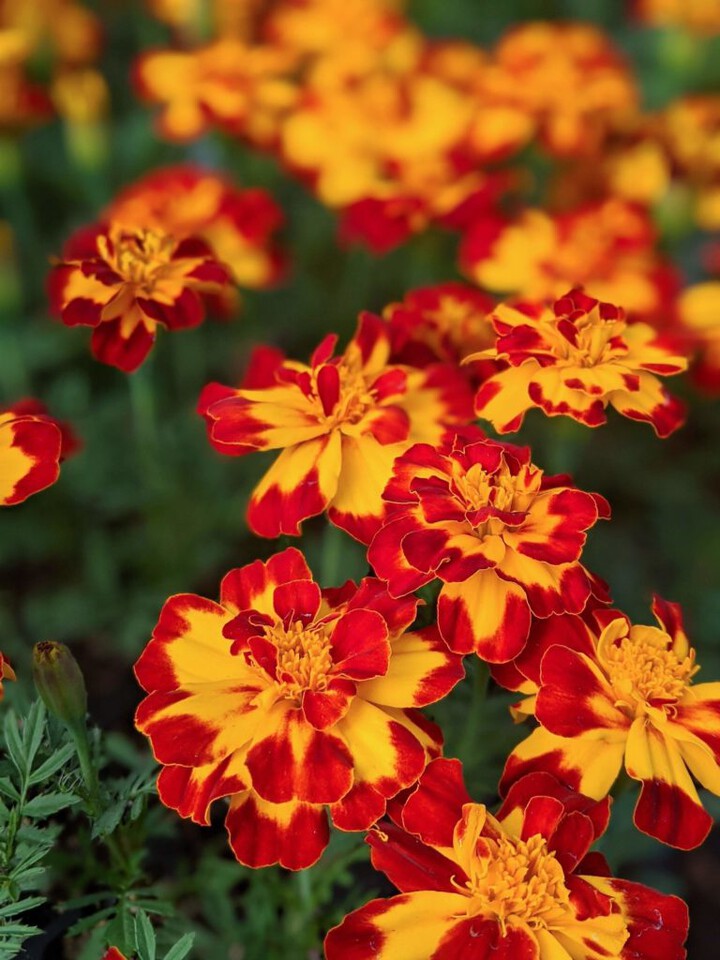Scientific Name: Tagetes spp.
Common Name: Marigold
Common Species: Signet, French, African
Common Colors: Reds, Oranges, Yellows
Plant Type: Flower
Annual or Perennial: Annual
Hardiness Zone: Annual in All Zones
Self-Seeding: Yes
Bloom Season: Summer leading well into Fall
Grows Best In: Full sun (but will tolerate some shade), moderate watering levels, and are generally not picky.
Fun Fact: Marigold is the traditional Birth Flower for October, along with Cosmos.
Marigolds are one of the most useful flowering plants found in the garden. They’re easy to grow, put on a beautiful show, have edible petals, and best of all… they are wonderful pest repellents.
Marigolds are known for repelling not only tiny pests like knot root nematodes (those are the nematodes that are not beneficial), tomato hornworms, cabbage worms, thrips, squash bugs, whiteflies, but they have also been known to repel even large pests like deer! Plant marigold around the border of your gardening space to help keep deer and rabbits away (though they have been known to pluck the marigold and toss it aside to get to the plants they love the most). To help with pests of the insect variety, plant Marigold near plants preyed upon by such pests – tomatoes, cabbage, squash, strawberries, roses, etc.
Culturally, Marigolds are associated with celebrating the souls of those who have passed. Known as Flor de Muerto (Flower of the Dead), Marigold is said to be the only scent that the dead are able to detect and therefore this flower is able to attract the souls of the dead. They feature heavily in the Mexican tradition of Dia de los Muertos, or Day of the Dead. The flower is used to decorate Ofrendas (altars) dedicated to loved ones who have passed on from this world. Other western cultures have been known to refer to this flower as the “Herb of the Sun,” and it is associated with warm feelings of happiness and warmth.

Planting Marigold is easy, and can be done by simply scattering the seed and dusting the seeds with a light layering of soil. They germinate quickly, and are quite tough little plants. Keep the soil moist while the seed is germinating, and water at standard one inch per week levels after established. In the Fall during garden winterization, mulch the Marigolds into the soil to help keep nematodes at bay. Allow the flowers to self-seed in order to encourage more Marigolds for the next season.
